In the last 15 years or so, Blackpool have had something of a rollercoaster journey.
From shocking the footballing world in 2009-10 by securing promotion to the Premier League to being relegated to EFL League Two in 2015/16, they have had quite an unpredictable time.
This season is their first back in League One since 2020/21, following two campaigns in the Championship, and the Tangerines are looking to bounce back immediately with Neil Critchley’s side aiming to qualify for the playoffs.
Blackpool lacked overall quality and tactical direction last season, finishing rock bottom in England’s second tier. However, this season, Critchley’s team has made a huge improvement in tactics, often forming a 3-5-2.
The Seasiders have leaned into a direct approach, and it is undoubtedly producing some positive results.
This scout report will provide a tactical analysis of Blackpool’s direct tactics in attack, looking at where and how they look to execute long balls forward and how they operate in the final third.
Neil Critchley Tactics – Through balls
We’ll discuss Blackpool’s use of long and progressive passes later in the analysis, but before we do, their use of through balls deserves recognition.
The Tangerines have found a knack for utilising the skill in the right areas.
As the analysis will reveal, they are the most frequent users of through balls and one of the most accurate—through balls should be something opposition defences should be very afraid of.
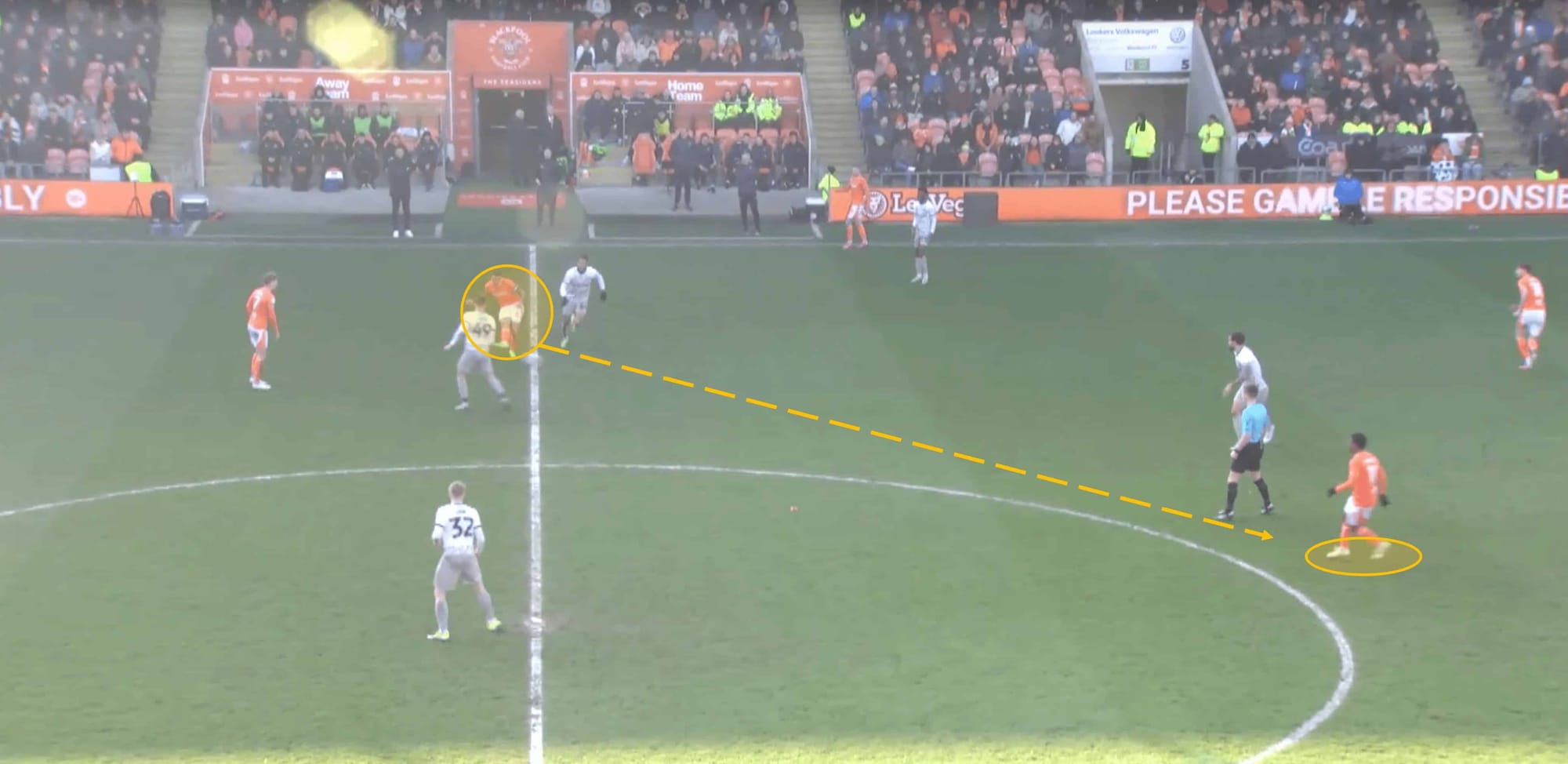
According to the data, Blackpool are one of the most direct teams in League One.
However, they should not be underestimated in their build-up play on the ground, which utilises individual quality in critical areas and moments.
Off-the-ball movement is critical in these situations, particularly for young playmaker Karamoko Dembélé, who likes to drift and roam in midfield to locate pockets of space from where he can hurt the opposition.
Dembélé, on loan from Ligue 1 side Brest, is a player of great potential, someone we recently highlighted in a recent article.
Expect to see him playing at a higher level in the next few years.
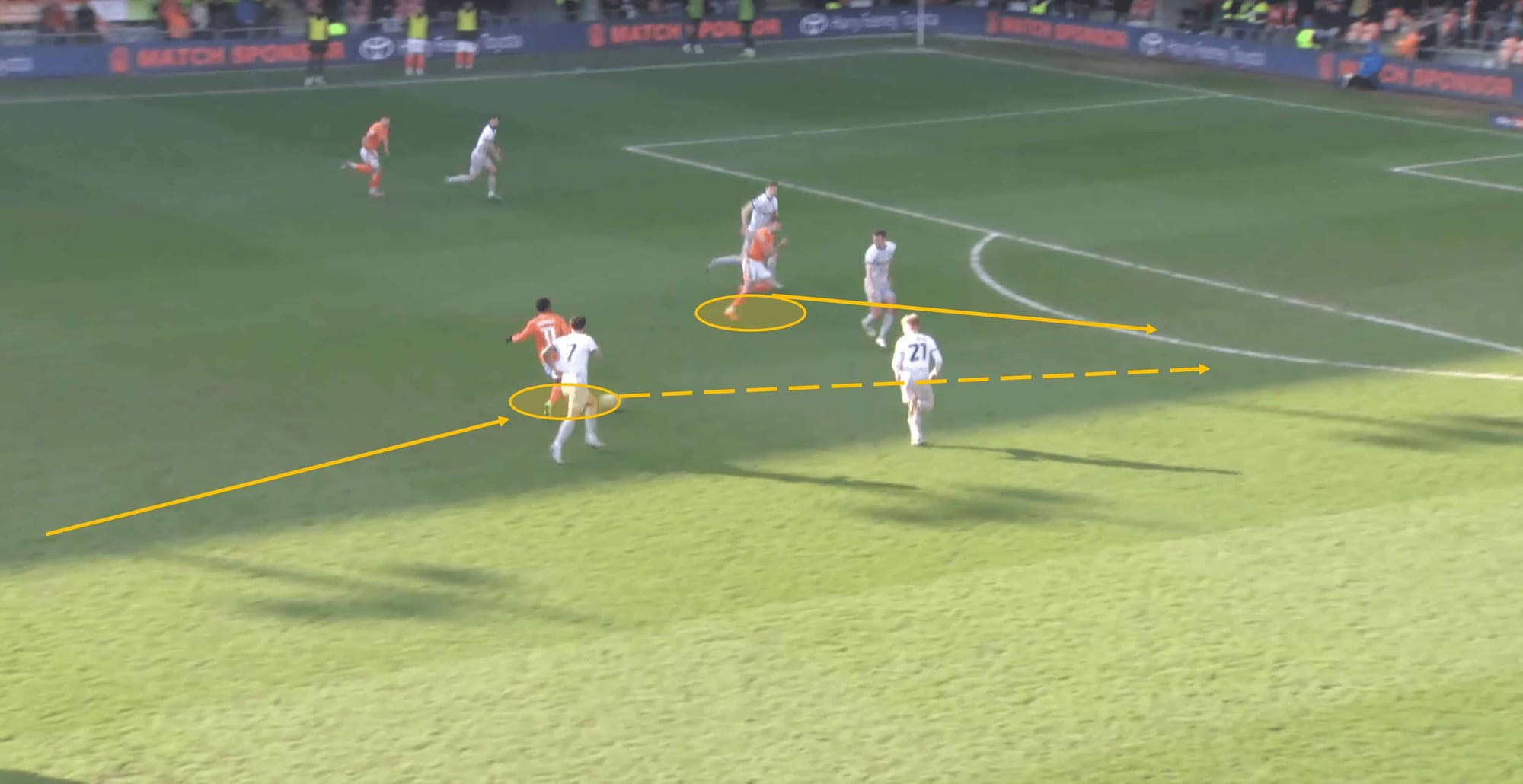
After receiving the ball in that central midfield space, Dembélé showed little hesitation in driving forward into the final third before executing a defence-splitting through ball for his teammate to run onto.
As mentioned, getting into positions where a through ball is an option is a big priority in Neil Critchley’s tactics – if you get them right, the chance on goal is usually huge.
Hence, getting into the right places from which to play those passes is essential.
Blackpool’s average through balls per 90 is 8.08, the highest average in the division by some distance—a clear indication that it is part of Blackpool’s tactical focus.
And so it should be—not only do they have a high engagement, but their accuracy rate of 34.2% is the fifth-highest in League One.
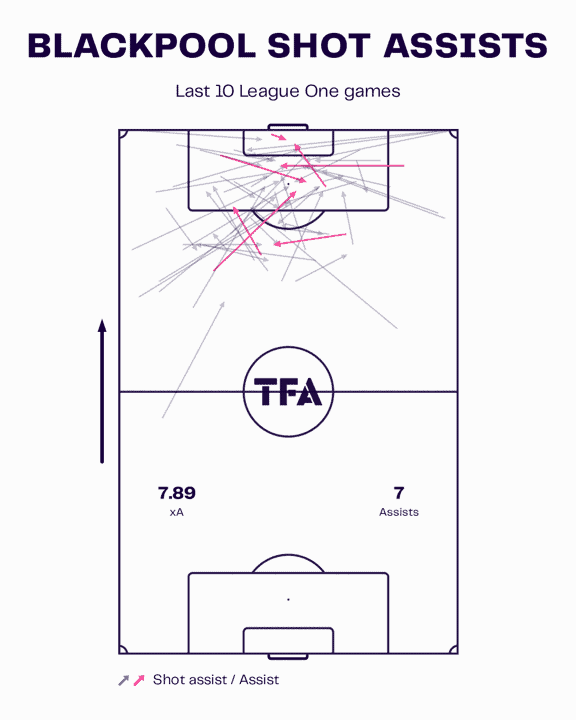
This data visual gives us an idea of where Blackpool’s chances of goal have come from in their last 10 league games.
Firstly, credit is due for making shot assists from a variety of locations.
Secondly, they show a clear tendency to create chances from central areas, which is similar to what we saw Dembélé in the previous example.
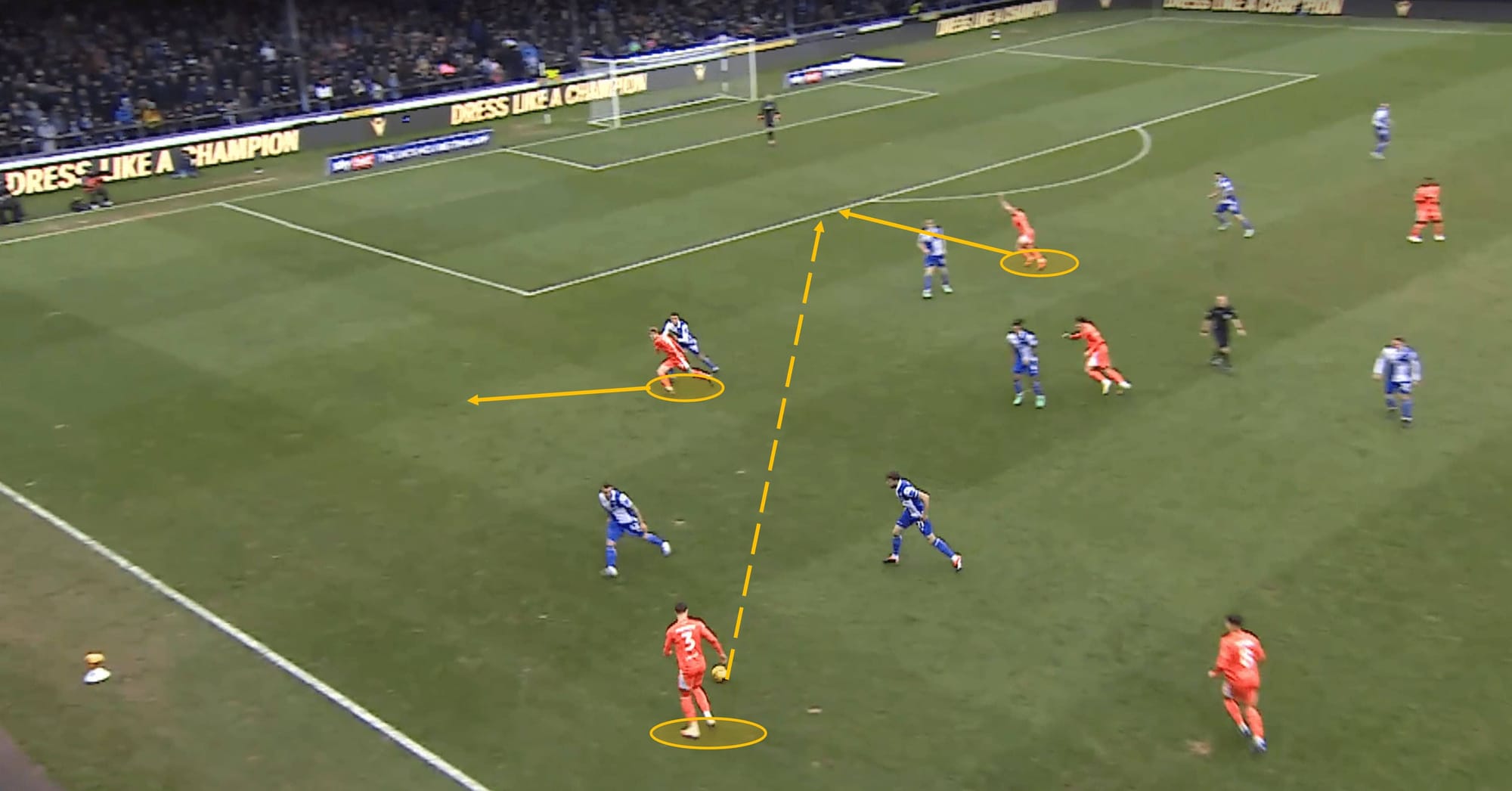
Through balls don’t just come from central areas though, and Blackpool look to utilise dangerous balls from wide areas, as the previous data visual demonstrated.
James Husband, the man on the ball in the example above, is one of the most frequent through-ball passers in the division, averaging 1.61 per 90 – Dembélé and Oliver Norburn also post similar engagements, but Albie Morgan is Blackpool’s most frequent user of through balls, averaging 2.01 per 90 – League One’s third-highest individual rate of through balls.
This example from Husband highlights Blackpool’s ability to create chances from practically nothing in wide areas.
You’ve got the centre forward eager to get in behind the opposition defence.
Still, the movement ahead of Husband is a subtle yet clever detail, dragging the opposition full-back out wide and giving Husband more space to play that through ball.
The lowdown on Blackpool’s long passing
And now, as promised, the analysis of Blackpool’s use of long balls, a staple of their attacking tactics.
Like their through-ball tendency, the Tangerines have a high frequency and accuracy with long and progressive passes.
Here, we look at different ways they use the long approach and how it’s more than simply hoofing the ball up-field while hoping a teammate latches onto it.
Blackpool currently average 58.25 long passes per 90 (League One’s third-highest), highlighting their direct approach
. However, their long pass accuracy (55.4%—League One’s second-highest)deserves all the love in the world from the fans as it is producing results.
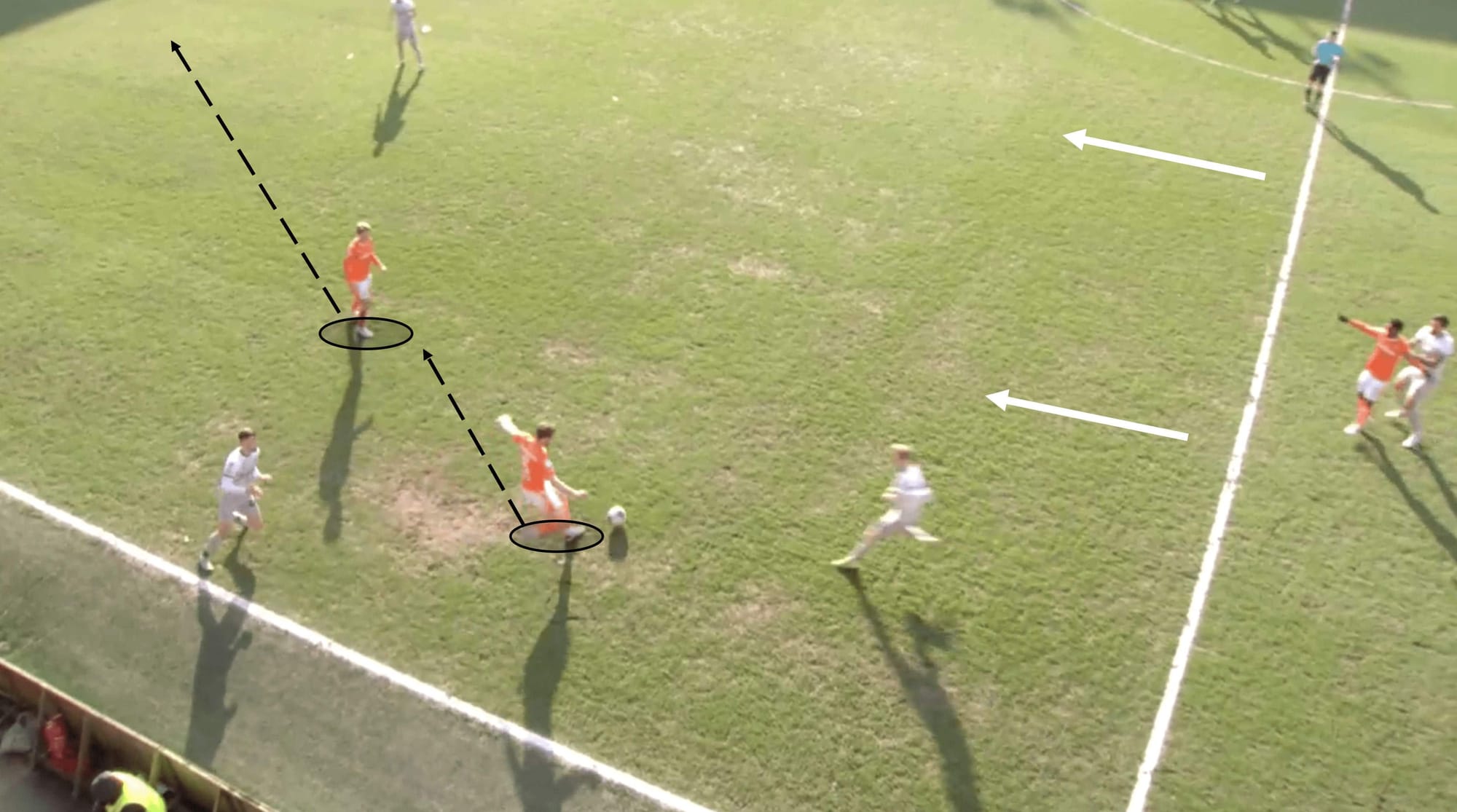
Being successful with a direct approach requires detail and structure, just like any other set of tactics.
For Blackpool, going long means sometimes going backwards first.
This serves a couple of purposes.
Firstly, the teammate who is about to receive the pass in the image above is unmarked, so he is the apparent passing choice if we’re talking about ball retention.
The recipient then opts to play backwards again – playing with possession in their own defensive third is nothing alien to Blackpool, which brings us to the second purpose of this tactical element.
Playing backwards and holding possession in the defensive third encourages the opposition to push up the pitch, which gives the Tangerines more chance of hurting the opposition with long balls, either by getting in behind/into the channels or using a target man to hold the ball up.
In contrast, the opposition midfield is higher up the pitch.
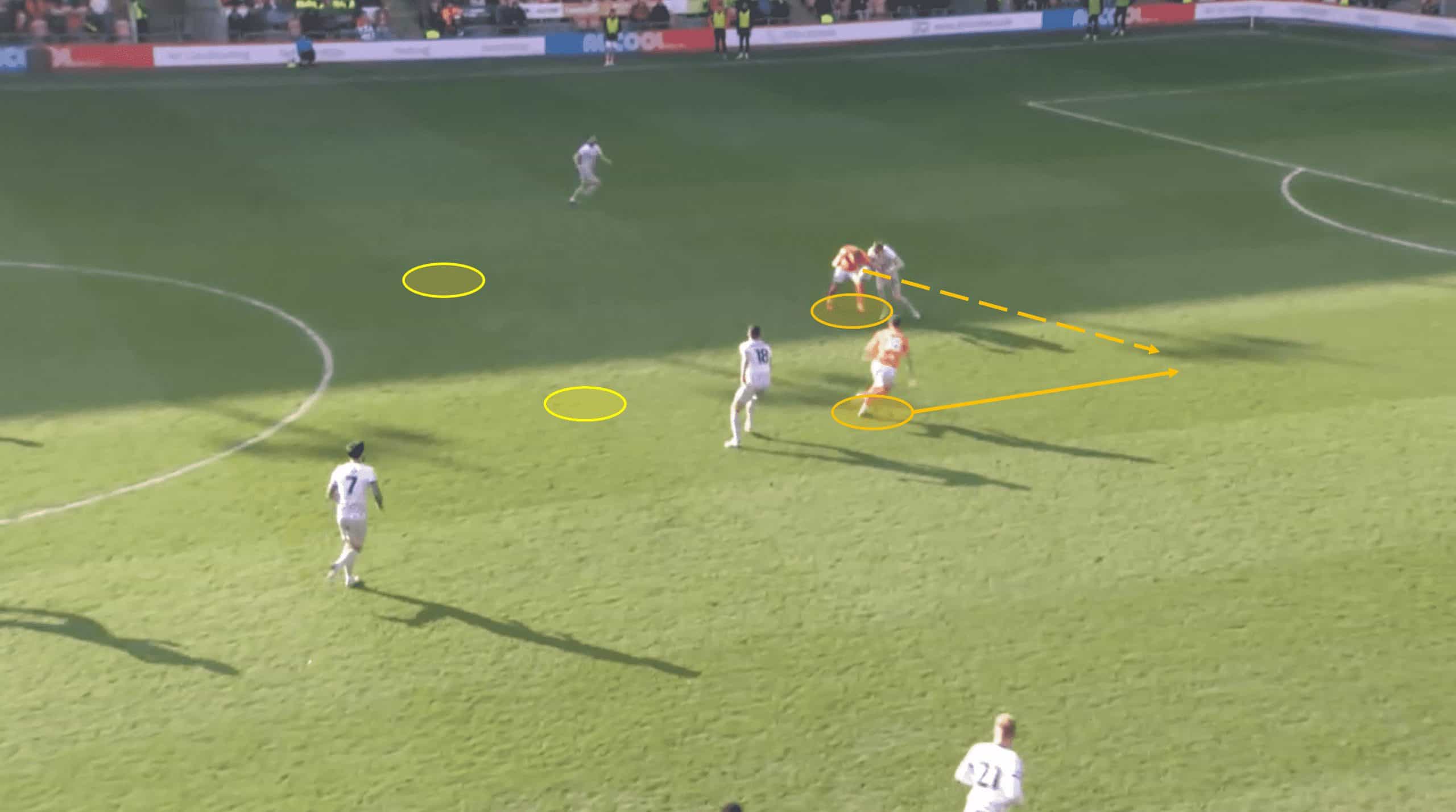
When going long from the back, Blackpool seem to utilise two main approaches in terms of where they go after the CF receives the ball.
The first is what you see unfolding in the image above – an attacking teammate looks to break free of markers and run off the target CF, with the long ball recipient looking to cushion the ball into the path of the runner.
We see a lot of alternative options, with two supporting teammates around the areas marked by the yellow circles, with the idea that the CF cushions the ball to one of those options.
By this time, suitable attacking support/presence has arrived in other areas of the pitch.
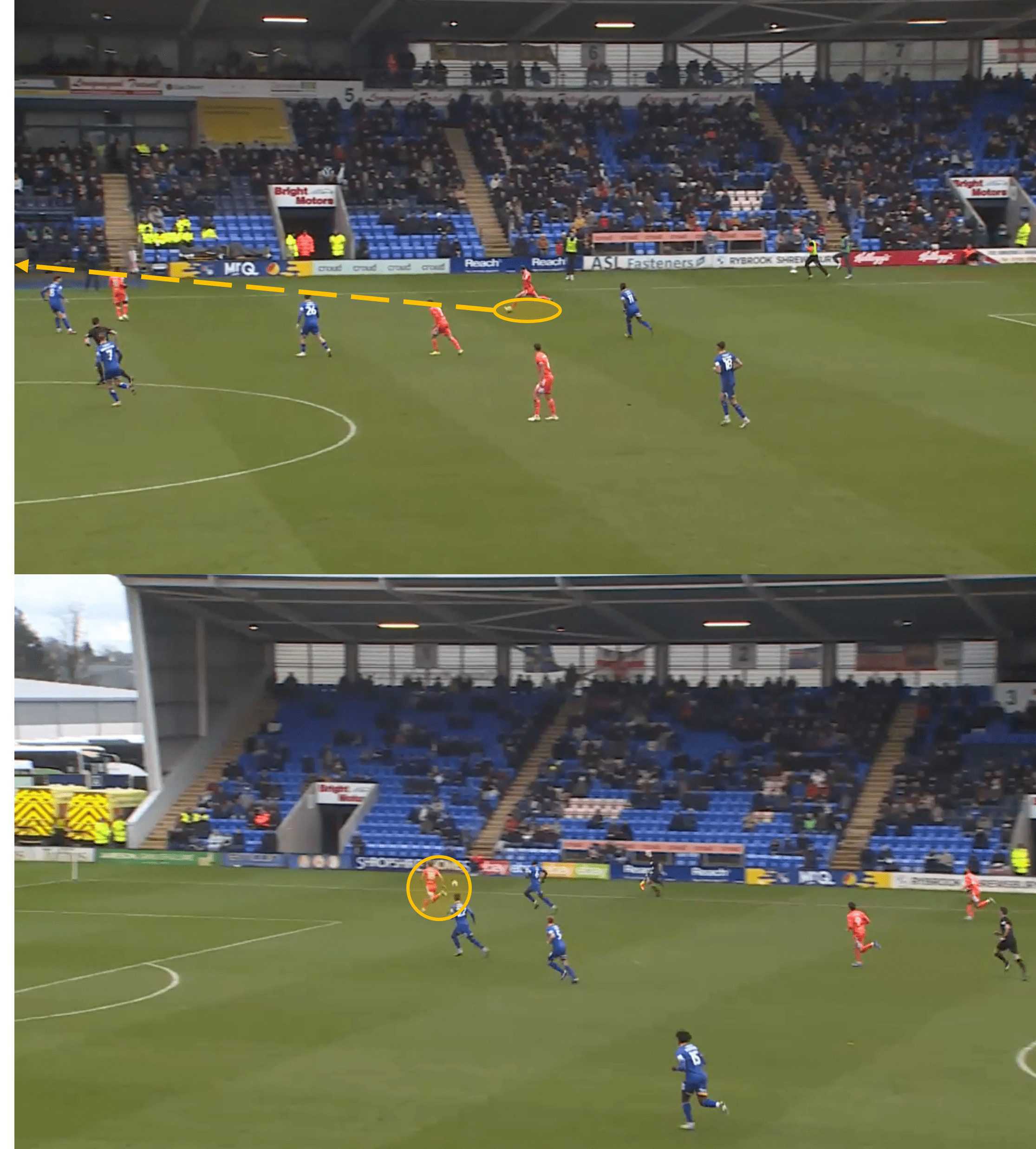
We touched on one use of long balls, which is to hit the channels and get in behind the defence.
It seems to be an essential part of Tangerine’s tactics.
Their CBs aren’t afraid to hit those balls, which can generally be low-percentage in terms of success.
However, if they are hit right, they can cause panic in the opposition’s defence while attacking support arrives quickly.
It’s a fast-track way of getting the ball into dangerous areas in the final third.
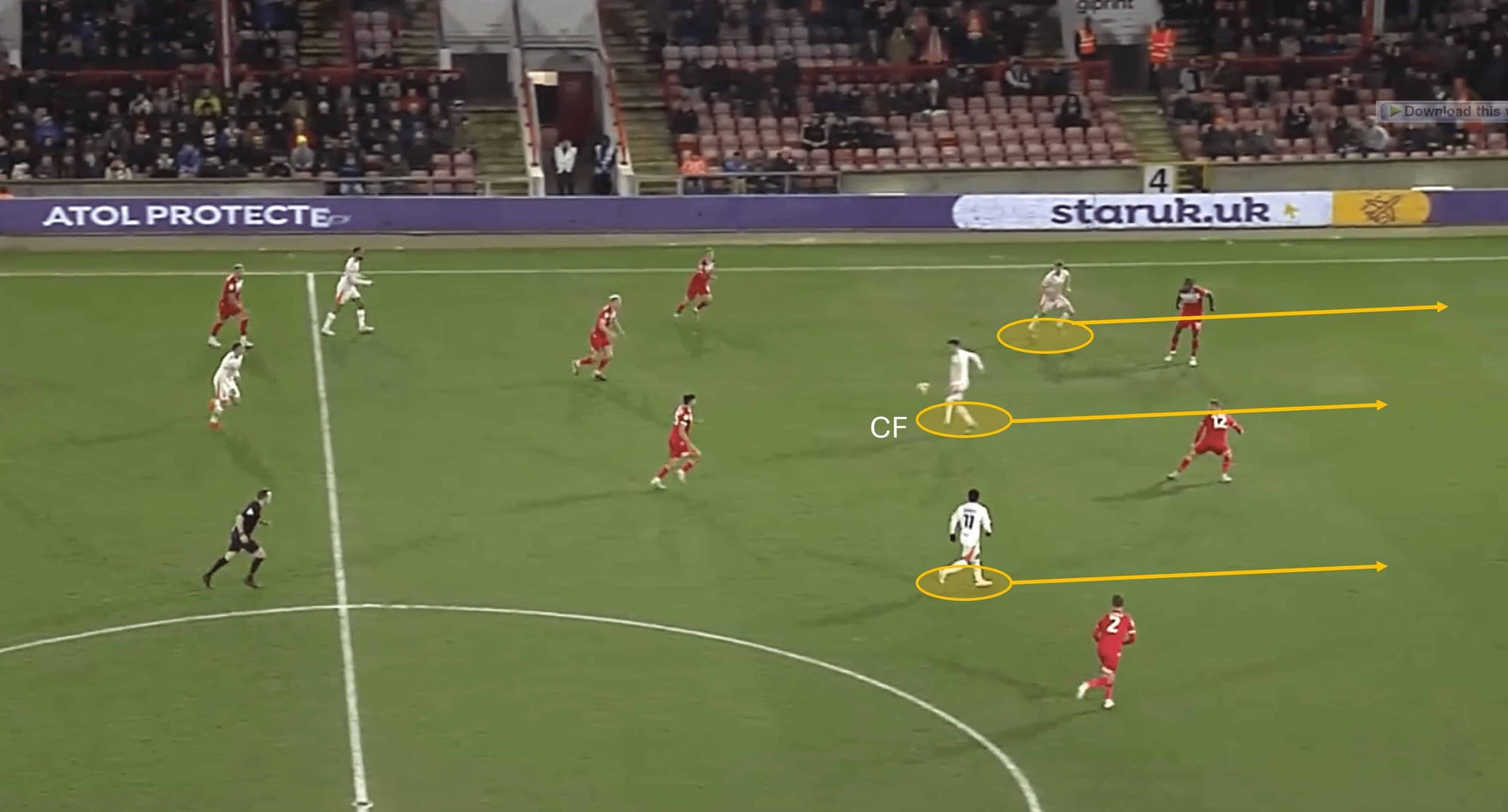
Hold-up play is a quintessential element of direct attacking tactics and can have several benefits.
It can be helpful in general possession and build-up play and, when used correctly, highly effective in attacking transitions.
Regardless of what scenario hold-up play is applied to, having the right support close by is vital.
Supporting options for the recipient to pass backwards is essential, as that move would allow the team to take a quick step up the pitch and put more pressure on the opposition.
A more directly dangerous option, though, is having nearby supporting teammates who can either burst free into a space to receive the ball or receive the ball to immediately engage the opposition defender in a 1v1 situation.
Blackpool has shown a good ability to have an array of supporting positions for the target man when holding the ball up.
Aerial threat in the box
It may come as no surprise given their direct tactics, but we’ll tell you anyway – Blackpool are a real aerial threat in the penalty box.
Their use of direct attacking tactics and their aerial ability as a team are a match made in heaven and can often prove to be the opposition’s downfall.
This final segment will provide a data-led analysis of Blackpool’s aerial threat in attack.
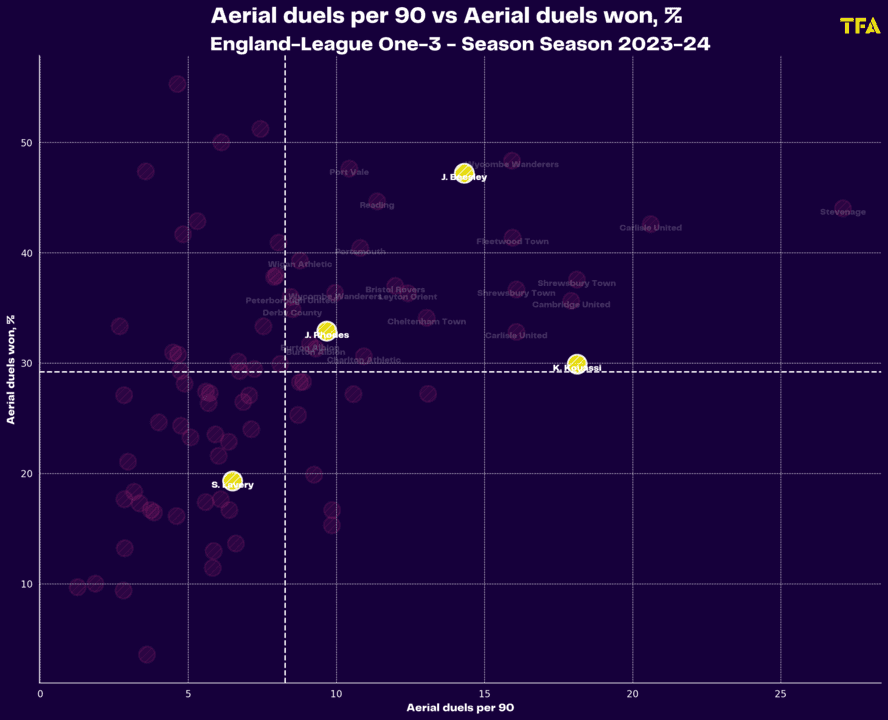
We start by looking at the engagement and success Blackpool’s CFs have in aerial duels, regardless of the location on the pitch—this is in comparison to every CF in League One.
Straight away, we can see why they like to go long when three of their four forwards place in the upper right quadrant, meaning they rank above average in both aerial duels per 90 and aerial duels win % (against other CFs in League One).
Jake Beesley is a serious aerial menace, ranking in the top 10 for both metrics against League One CFs.
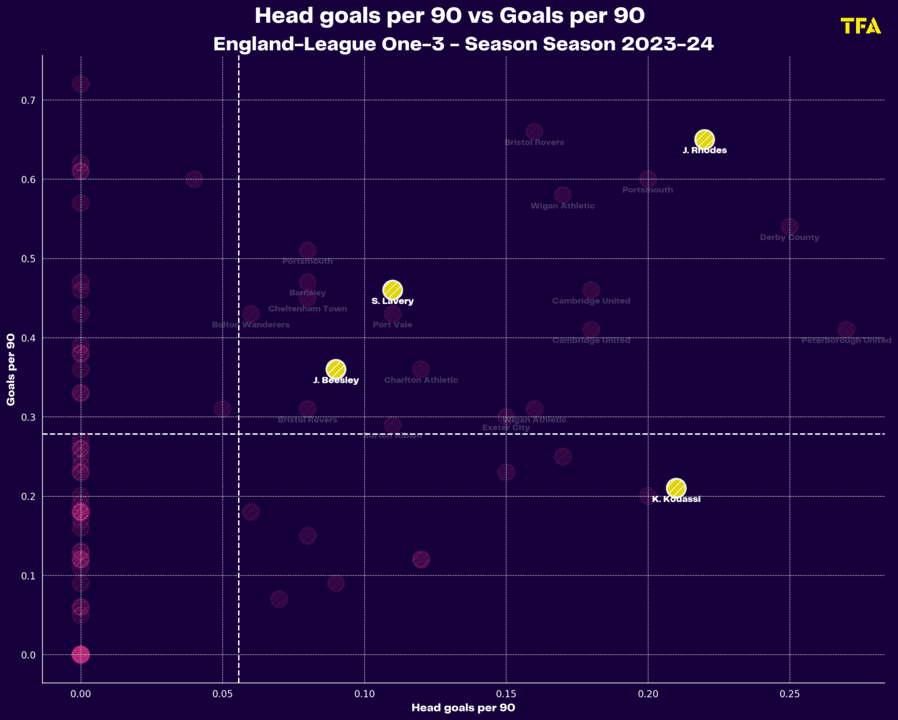
We can now focus on how the Blackpool CFs perform aerially regarding goalscoring.
The Tangerines have scored 56 goals this season—1.36 per 90 minutes—and while their average for shots per 90 minutes is low, they have the league’s second-highest shot accuracy percentage.
In terms of scoring headers, though, that is where they really shine.
Only three teams have bettered their tally of 12 headed goals this campaign in League One, indicating a proper aerial threat.
Again, three of their four strikers rank above average for both headed goals per 90 and goals per 90, a good consistency across the board.
EFL legend Jordan Rhodes, who has 15 league goals this season at the time of writing, ranks impressively high in both metrics, showing that he is an excellent fit for Blackpool and their tactics.
Conclusion
When Blackpool were relegated to League Two a few years back, it probably felt like doomsday for many of their fans, particularly those who watched their side reach the Premier League.
But, under the guidance of Neil Critchley’s manager style, with a clear tactical direction in attack, things are looking up again, and the Tangerines still have a strong chance of reaching the playoffs.

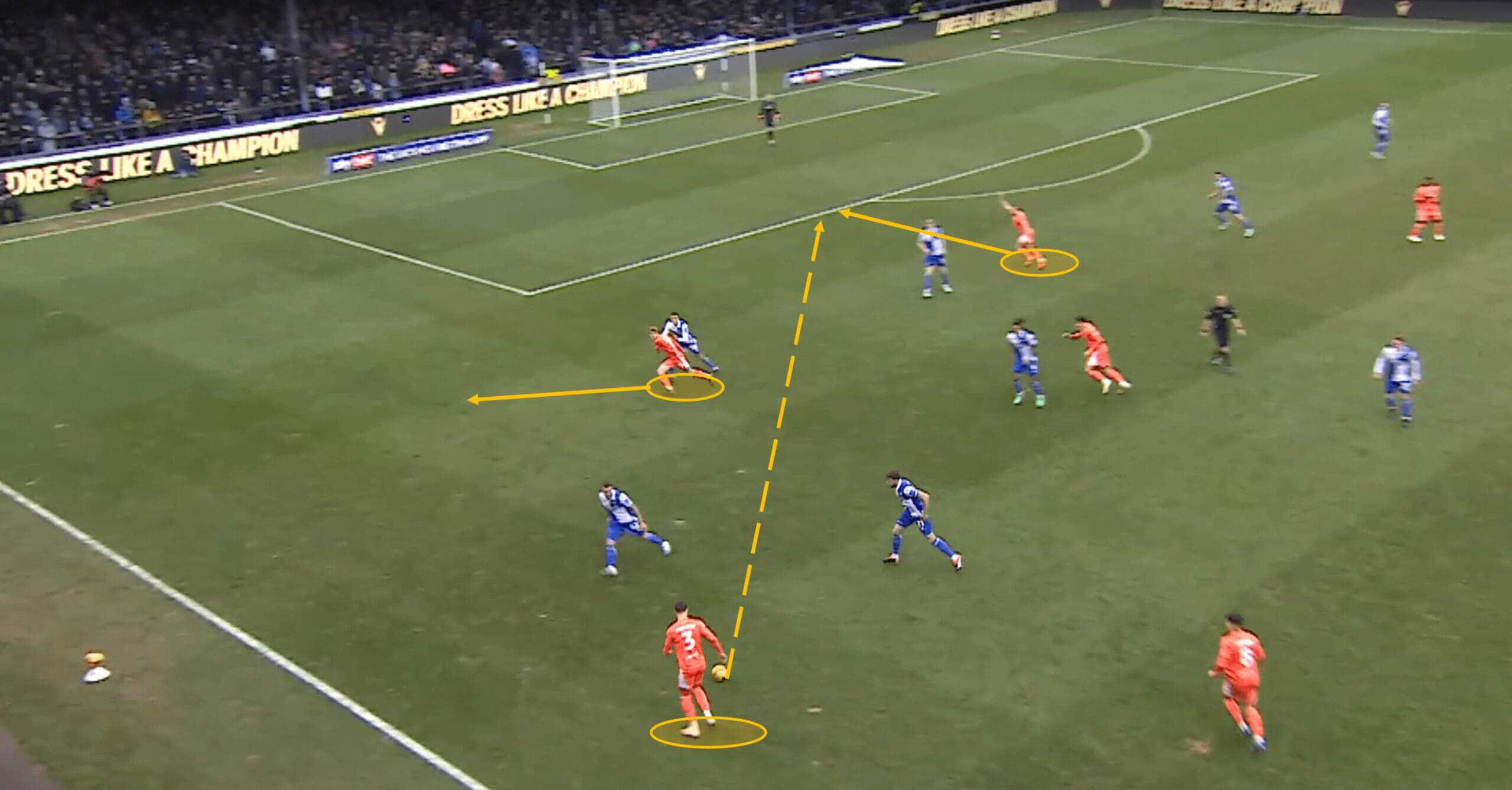




Comments